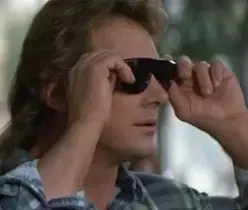- cross-posted to:
- aitech@feddit.it
As soon as Apple announced its plans to inject generative AI into the iPhone, it was as good as official: The technology is now all but unavoidable. Large language models will soon lurk on most of the world’s smartphones, generating images and text in messaging and email apps. AI has already colonized web search, appearing in Google and Bing. OpenAI, the $80 billion start-up that has partnered with Apple and Microsoft, feels ubiquitous; the auto-generated products of its ChatGPTs and DALL-Es are everywhere. And for a growing number of consumers, that’s a problem.
Rarely has a technology risen—or been forced—into prominence amid such controversy and consumer anxiety. Certainly, some Americans are excited about AI, though a majority said in a recent survey, for instance, that they are concerned AI will increase unemployment; in another, three out of four said they believe it will be abused to interfere with the upcoming presidential election. And many AI products have failed to impress. The launch of Google’s “AI Overview” was a disaster; the search giant’s new bot cheerfully told users to add glue to pizza and that potentially poisonous mushrooms were safe to eat. Meanwhile, OpenAI has been mired in scandal, incensing former employees with a controversial nondisclosure agreement and allegedly ripping off one of the world’s most famous actors for a voice-assistant product. Thus far, much of the resistance to the spread of AI has come from watchdog groups, concerned citizens, and creators worried about their livelihood. Now a consumer backlash to the technology has begun to unfold as well—so much so that a market has sprung up to capitalize on it.
Obligatory “fuck 99.9999% of all AI use-cases, the people who make them, and the techbros that push them.”



Real artists mix their own pigments, ask Leonardo da Vinci (*).
(*: or have a studio full of apprentices doing it for them, along with serially copying their masterpieces, some if them made using a “camera obscura” which is totally-not-cheating™, to sell to more clients. YMMV)
Maybe the AIs should mix their own pigments as well, instead of taking all the other artists’ work and grinding that up.
Maybe other artists should do that too. Art isn’t built from nothing but the sheer magical creativity of the artist. If that were true we’d have Sistine cave paintings instead of the finger painting we currently have in prehistoric caves. Inspiration, is in fact, a thing.
Inspiration is absolutely a thing. When Constable and Cezanne sat at their easels, a large part of their inspiration was Nature. When Picasso invented Cubism, he was reacting to tradition, not following it. There are also artists like Alfred Wallis, who are very unconnected to tradition.
I think your final sentence is actually trying to say that we have advances in tools, not inspiration, since the Lascaux caves are easily on a par with the Sistine Chapel if you allow for the technology? And that AI is simply a new tool? That may be, but does the artist using this new tool control which images it was trained on? Do they even know? Can they even know?
I’ve spent every summer vacation in my teens traveling Europe with my parents, going to every church, monument, art museum, cave, etc. available. I had no control over the thousands upon thousands of images I was trained on. I definitely don’t know which images I’ve seen and which not, and would have a really hard time knowing.
If I now make a painting, am I less of an artist for it?
We’ve had a ton of advances in inspiration. Artists constantly get inspired by the works of those before them, whether to repeat or to break up with previous styles. Nowadays you can even do it online… which is exactly what all these AIs have done.
Yeah and what is the first thing they teach you in art school? History. From day one you’re studying the works of other artists and its implications. How they managed to make an impact on the viewers and how it inspires you. Then we produce output that’s judged by our teachers on a scale and we use that as weighted training data.
If you make a painting now, it wouldn’t be based on those thousands and thousands of paintings since, although you have seen them, you apparently do not remember them. But, if you did, and you made a painting based on one, and did not acknowledge it, you would indeed be a bad artist.
The bad part about using the art of the past is not copying. The problem is plagiarism.